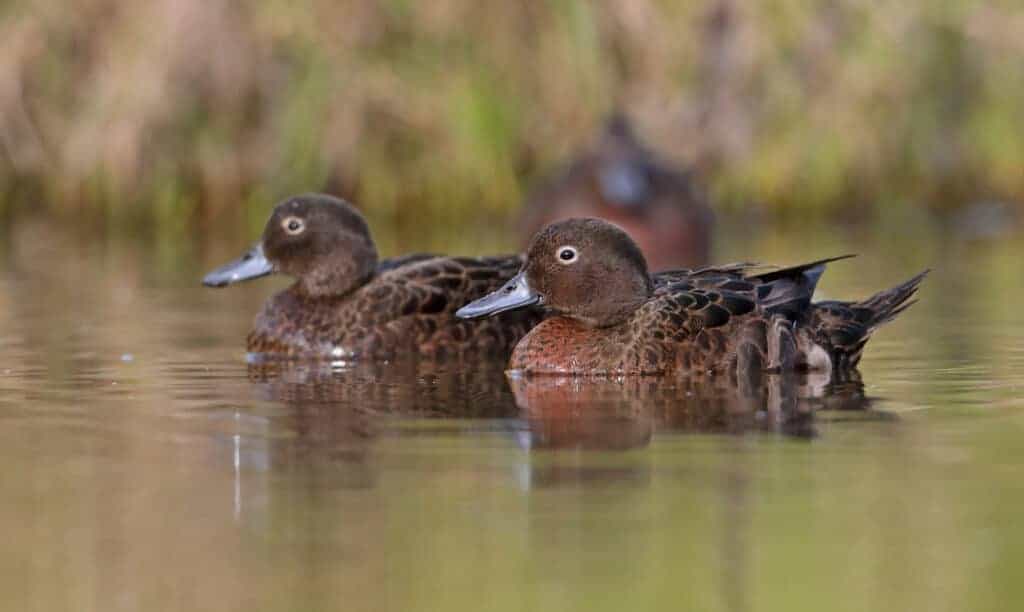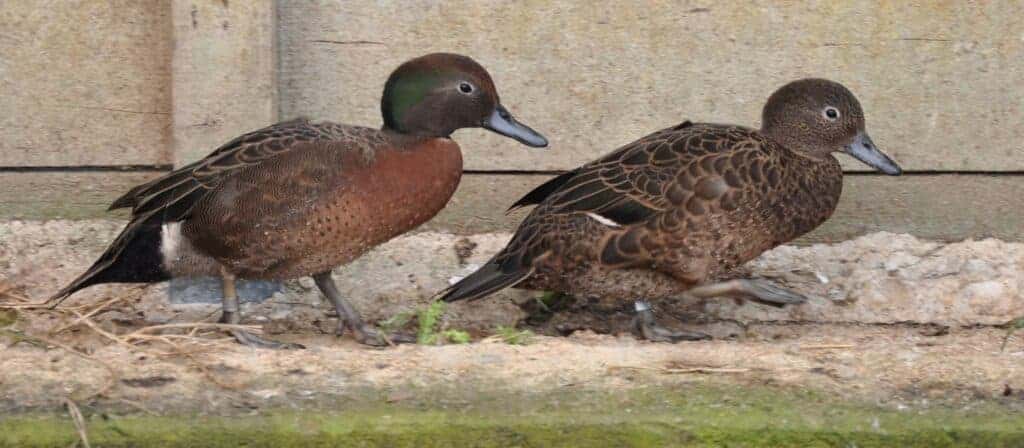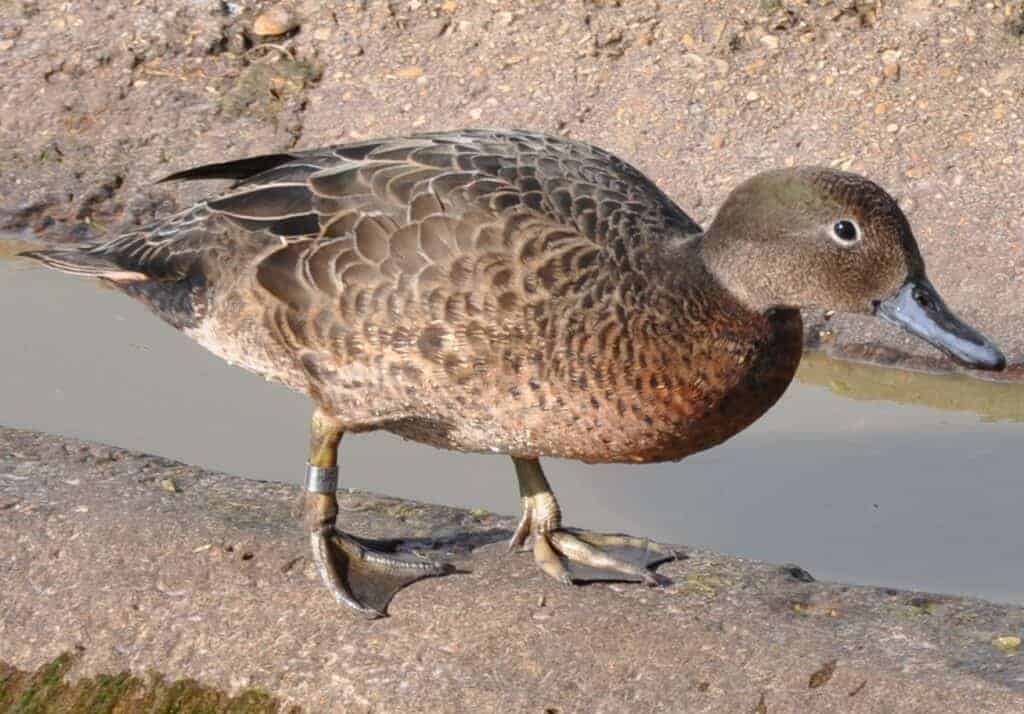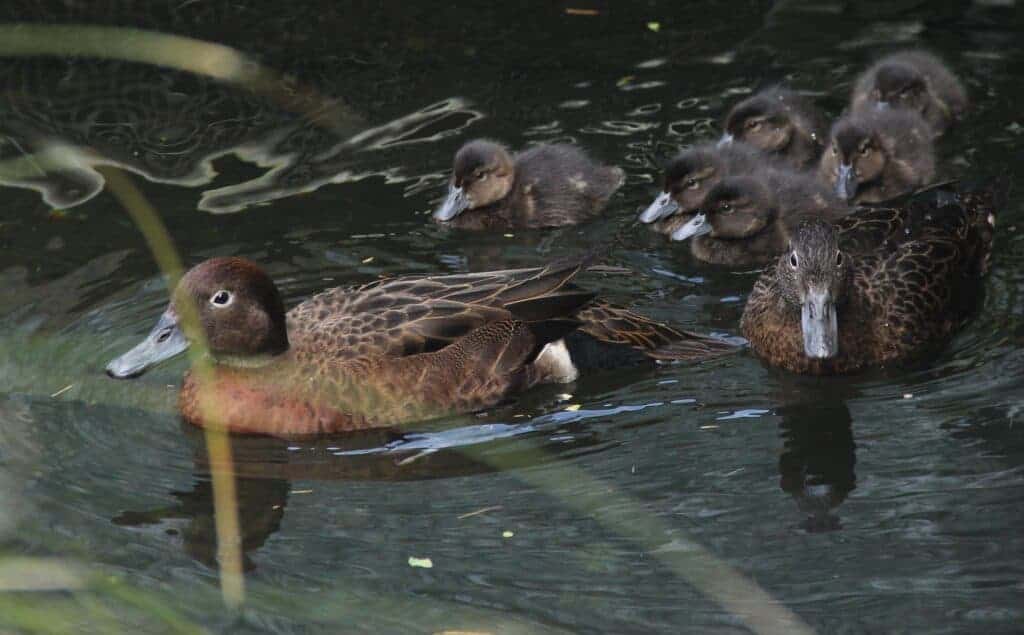Brown Teal

Brown Teal historically exploited a wide range of habitats. Now they are mostly associated with agricultural areas and the margins of small streams that retain overhanging marginal vegetation. Some birds still feed in estuaries on Great Barrier Island. Their diet is freshwater and marine invertebrates and terrestrial and freshwater vegetation.
Despite being outshone by many more colourful species, the Brown Teal is championed by several dedicated aviculturists.

Anas chlorotis
The Brown Teal, or Pāteke, were once widespread throughout New Zealand. They are now rare and restricted to Great Barrier Island, coastal valleys of eastern Northland, and several other locations around New Zealand where new populations have been established using translocated birds.
The first Brown Teal to officially be exported from New Zealand arrived at London Zoo in 1934 and from this stock, the Severn Wildfowl Trust (now the Wildfowl & Wetlands Trust) received a female in 1949. Two pairs were sent direct to the Severn Wildfowl Trust from New Zealand in 1957.

Essentially darkish brown, featureless ducks, there are differences in plumage and size between the sexes. Males in breeding plumage have a subtle green iridescence on the head, occasionally a narrow white neck ring, dark chestnut breast, and conspicuously barred light and dark brown flank feathers with a whitish patch at the tail base. Females and juveniles are a uniformly dull but dark mottled brown. Both sexes have a conspicuous white eye ring, dark-grey bill, legs and feet, and dark brown eye. Like many of its congeners, the speculum is iridescent green.

The Brown Teal suffered a decline in numbers and range since the late nineteenth century. There are currently estimated to be between 2,000 and 2,500 Pāteke living in a wild state in New Zealand.
Predators, habitat loss, hybridisation with Mallard and hunting have all contributed to Pāteke decline.
Brown Teal are faithful partners and can be fiercely territorial. Nest sites at the base of rush clumps close to water are favoured, where the duck lays 3–9 large pale fawn eggs.
Both parents guard the ducklings until they fledge. They tend to stay close to the nesting territory. Once mature, the ducklings are booted out when the parents start their post-breeding moult.